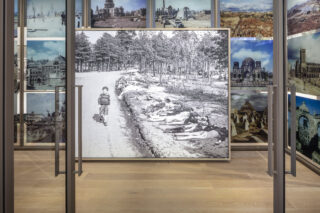The Netherlands and the Shoah

Always on display
National Holocaust Museum
Ticket € 20,-
At the heart of this exhibition is the fate of the Jews of the Netherlands during the Second World War. The Nazis persecuted them and aimed to kill every single one. They managed to murder around six million, eradicating Jewish communities and culture throughout Europe. This is known as the Holocaust, or in Hebrew: Shoah, meaning catastrophe. The Nazis persecuted and massacred other groups too, including Jehovah’s Witnesses, resisters, Roma and Sinti, and homosexuals.
The Nazis and their collaborators made a series of deliberate choices, fed by an intense hatred of Jews. War gave the perpetrators a perfect cover to implement far-reaching policies of discrimination, segregation, theft, impoverishment, exploitation, deportation and finally murder. The exhibition shows how regulations and people enabled this. Personal stories and experiences reveal the consequences for those who lived through it.
Wallpaper of anti-Jewish measures
The gallery walls are covered from top to bottom with the texts of anti-Jewish measures. The Nazis began imposing these in May 1940 to discriminate against Jews, to segregate, rob and deport them. These were issued as ordinances and regulations to create a veneer of legality. This enabled the Nazis to force Jews to register (1941) and to wear a yellow star (1942). These walls provide as complete an overview of the anti-Jewish regulations in the Netherlands as possible.

Wallpaper of anti-Jewish measures
-Thijs Wolzak
Forget-me-nots
A card frame with three passport photos of unknown victims and their appeal ‘Don’t forget us!’ from the Jewish Museum collection inspired our Forget-me-nots: nineteen uniquely designed showcases, across the museum, each highlighting one person’s life. With a personal memento, a portrait photo or video, a brief text, an audio fragment, each Forget-me-not brings the life of a Holocaust victim into sharp focus.

'Forget-me-not' for Siem Vos
-Mike Bink